SAN ANTONIO (Day 3 - part 4)
Walking through town...
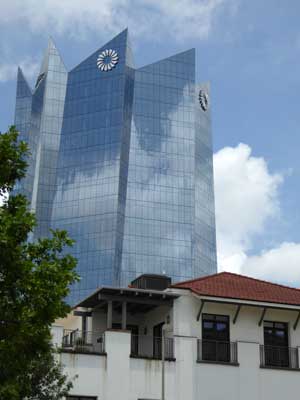
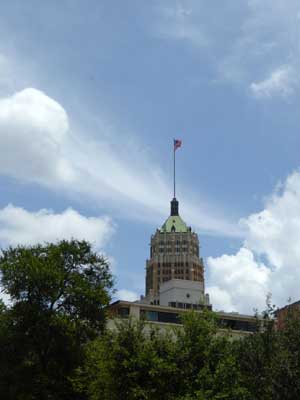
A spectacular sky!
There had been a mass going on when we entered the San Fernando cathedral earlier in the day, so we popped back in again later, once everyone had left.

The site for the church was selected in 1731 by the captain of the presidio, Juan Antonio Pérez de Almazán, as he laid out a central square (now called Main Plaza) for the new villa. Construction began in 1738, allowing it to claim its place as the oldest cathedral in Texas. Today, the only remaining original walls are the those that form the sanctuary (the area around the altar).
The building suffered several setbacks (a flood in 1819 and a fire in 1828) so significant rebuilding was carried out in 1829. But by 1840, it had fallen into a state of severe disrepair, with half its roof missing. Essential repairs were done but it was not until 1868 that a total overhaul was begun. It was significantly enlarged and given a French Gothic appearance. The original single bell tower was replaced by twin towers (although the second one was not completed until 1902), triple entrance portals, a gable roof and buttresses. The original dome was replaced as was the dirt floor. In 1874, the church was designated a cathedral. The stained glass windows were added in 1920.

The early church, pre-1868

Before the second tower is completed, circa 1889


View of the sanctuary as it attaches to the main church



The tomb containing the ashes of some of those who died at the Battle of the Alamo




The altar ... Jesus with the four apostles
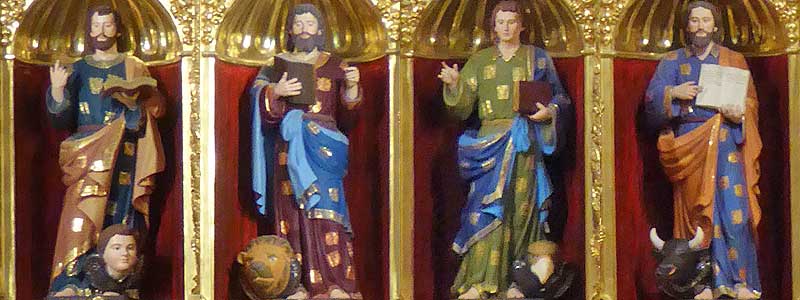
Matthew-the man, Mark-the lion, John the Evangelist-the eagle and Luke-the ox. In many religions, a specific symbol associated with the statue can often help you know who it's supposed to be. This was probably quite helpful for when a majority of people couldn't read.
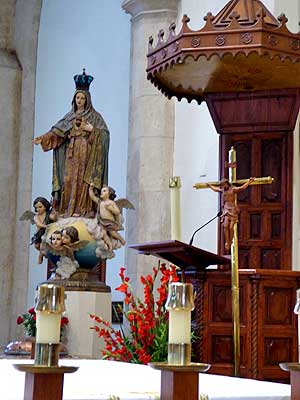

The pulpit ... and the coat of arms of the current Archbishop of San Antonio, Gustavo Garcia-Silver. The cathedral became an archdiocese (a district for which an archbishop is responsible) in 1926.


Two version of the same thing. The left one is more accurate to the one in the church, but I like the tilted hat better!
In the center of the image is the coat of arms for San Antonio. Some symbols include the large Christian cross, the single star (for the Lone Star state of Texas), the smaller 'T' cross of St. Anthony (derived from the short crutch he often needed), the Holy Sprit encased in flames (to show how Garcia-Silver's first ministry in Chicago was saved from a fire in 1871), Our Lady of Guadalupe and a long gold processional cross. Above the shield is a pontifical hat called a galero with ten tassels on each side. This was originally a pilgrim's hat like a sombrero. Its color and number of tassels varied based on the rank of the cleric. It was red with 15 tassels for cardinals, green with 10 tassels for archbishops, green with six tassels for bishops, etc.


St. Joseph (with white lillies) ... Ferdinand III (same guy on the front of the church)
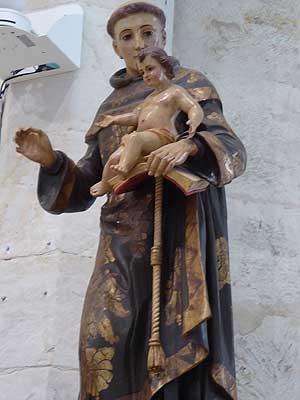

St. Anthony .... and St. Francis of Assisi standing on globe. This represents the moment when he renounced all worldly goods to embrace the religious life.


(left photo) A tilma was a type of outer garment worn by the men of central Mexico. In 1531, an image of the Virgin Mary (Our Lady of Guadalupe) miraculously appeared on one worn by St. Juan Diego Cuauhtlatoatzin, the first Roman Catholic indigenous American saint. This helped convince the people that they needed to replace their old beliefs with Christianity. ... (right photo) Statue of Toribio Romo Gonzalez (1900 - 1928), a Roman Catholic priest killed during the Cristero Rebellion (1926-29).


The pope


St. Ann (also in close-up) and St. Joachum


St. Francis of Sales and St. Monica (close-up)


St. Peter (with a key) and St. Paul (with a book and sword) ... St. Antonio and St. Frances Xavier

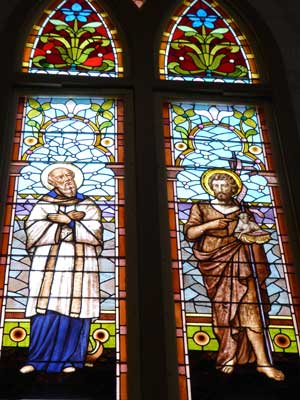
St. Michael and St. Raphael ... St. Francis and St. John the Baptist


The detail of St. John the Baptist ... and his rather human-faced lamb
We somewhat spontaneously decided to take a boat tour. Ricardo was our guide, taking us through the murky water, past restaurants and hotels and under bridges. As well as cruising the main loop, we also headed down the side channel to the Rivercenter mall.

Click for a larger image


Some interesting facts we learned:
- Apparently about 500 people per year fall into the river (there are no railings along the sidewalks)
but luckily the river is only 3 to 5 feet deep here.
- Some of the cypress trees are 500 to 600 years old.
- There are no mosquitos because of the huge number of bats that eat them.

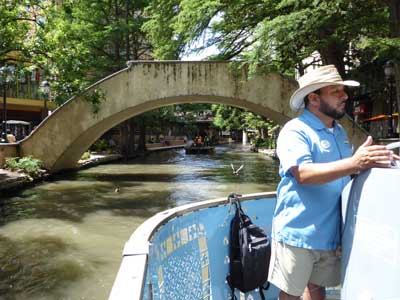



More facts:
- There were no cows, horses or chickens here before 1690. These were all brought over by the Spanish.
- When sailing across the Atlantic, the Spanish used pigeons as messengers.
- San Antonio is the state's the oldest city. Many Germans moved here from the East coast and became Mexican citizens.
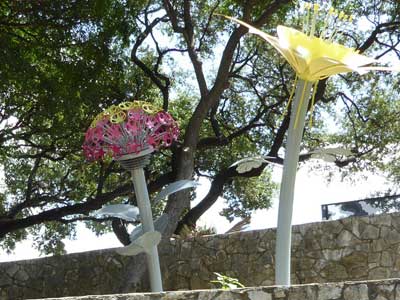

Heading down the side channel


(right photo) the split along the extended canal; the left goes to the mall, the right goes to the convention center


The mall

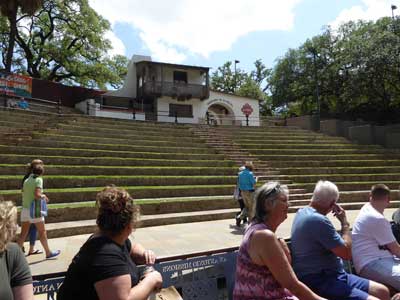
Back on the main loop .... The Ameson River Theater (the seats and...)


(... the stage directly across the water). The five bells represent the city's five missions (including The Alamo).


(left photo) The Hilton Palacio del Rio was built in 202 days for the 1968 World's Fair. The rooms were built as individual modules then slid into the frame. ... (right photo) The 750-foot-tall Tower of the Americas
return • continue

